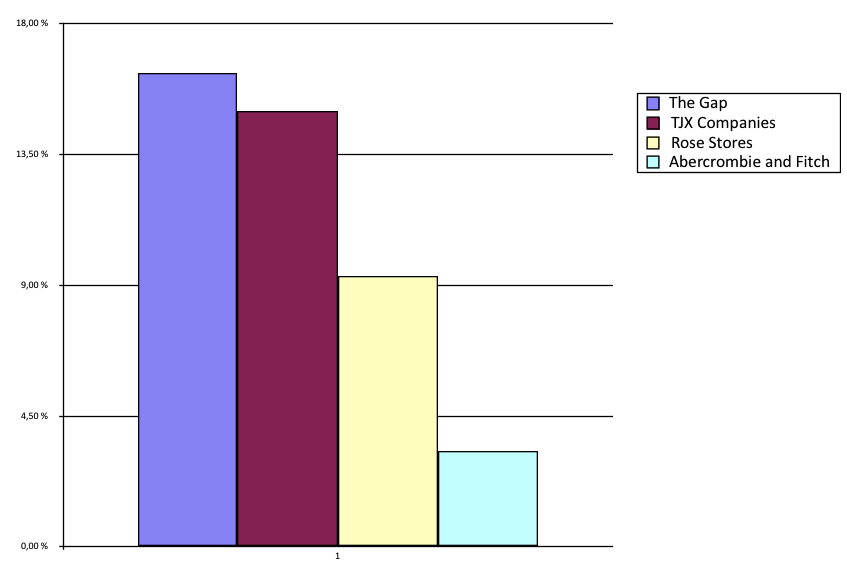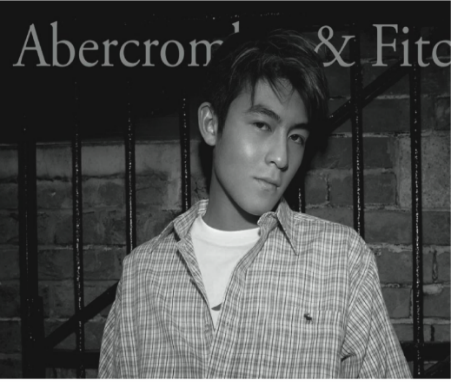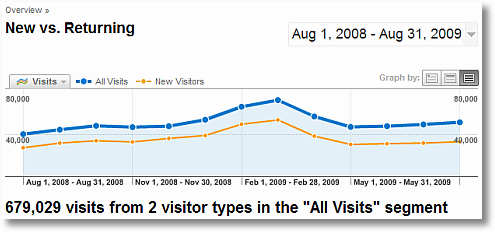Brand positioning
Abercrombie and Fitch is an American apparel seller. It was one of the most successful clothing retailers in the country.
However, after the 2007 and 2008 global recession, A&F have been recording dwindling profits for four consecutive years (Hoover’s Inc. 2010). A&F believes that discounts cheapen the brand and cause saturation (Rosenbloom 2009).
Secondly, the organisation has not changed its product portfolio for close to two decades. Its clothes are not edgy as it mostly focuses on classical pieces (Datamonitor USA 2009). This approach has made it unpopular among the youthful market.
Clearly, the company needs to reinvent itself if it hopes to survive in the fashion industry. The best place to start this journey would be in the international market, with specific emphasis on China.
Shown below is a table illustrating why the company needs to revamp its brand.

The chart above illustrates market share in the clothing retail market today.
A&F needs a new approach to its products. It has traditionally employed a risky sexual image to market its clothes. Flagship stores often use semi-dressed models to welcome clients. Several marketing campaigns have sparked off controversy on the overt sexiness of the brand.
Additionally, the company uses its rich American heritage as a point of differentiation among retailers. Aside from the latter, the A&F brand is renowned for high quality and sophistication. The company does not just sell clothes; it sells a lifestyle to its consumers.
Stores are dimly lit and stylish, while retail assistants endeavour to pamper their buyers. To maintain exclusivity, the company sells a maximum of 20 items to its consumers. However, such an approach seems to have failed in the recent economy.
The company needs a marketing campaign that will revamp the brand (Percy and Elliott 2009).
The following is a SWOT analysis of the company’s brand position
Creative approach
Marketing objectives
The three goals of this promotional campaign are:
- Raise brand awareness in the Chinese market: The primary goal of the campaign is to penetrate the Chinese fashion market by fostering brand awareness.
- Increase brand sales: Poor performance in the home market necessitates increases in sales in the new market. Once the campaign has created customer trust, then this should lead to an increase in sales for A&F products.
- Strengthen brand identity: The campaign strategy also focuses on strengthening brand identity by introducing efficient marketing ads. It will foster long-term perception of A&F as a lifestyle brand.
Key message
“Bare yourself” is the key message in the campaign. While the latter communication has been used quite literally in western markets, this message will be reinvented in the Chinese market.
Instead of attaching a sexual meaning to the phrase, A&F will redefine it to mean self expression and truthfulness. There will be no shirtless models in the fashion show or outdoor posters and banners.
The Chinese are very conservative people who would not resonate with such a level of explicitness. The promotion will emphasise pride in oneself as a plan for self expression.
Media strategy
Communication mix
Public relations
Social media awareness will be a significant pillar of the campaign. China’s primary social media website is Weibo. Therefore, A&F will use this platform to implement the promotion.
It will create a Weibo company web page that will contain information about the company, commercials and other updates concerning A&F. Customers can also share their experiences with each other concerning the same.
Additionally, public relations will occur through in-app mobile advertising. Here, the company will reach its target audience through a smart phone application.
The target audience is increasingly relying on mobile phones for internet access, so this would be a highly effective way of reaching them. Finally, the company will sponsor sporting events so as to popularise the brand.
Sales Promotion
This aspect will involve student discounts, a fashion show, as well as a lucky draw. They will last for one month after launching the flagship store because buyers need an inducement to visit A&F (Hackley 2010).
If customers purchase goods over a certain amount, they will be entitled to a lucky draw where they could win specific gifts.
Fashion shows have always been effective marketing tools for this retailer in different parts of the world; therefore, China will not be an exception. When launching the flagship store, A&F will have a fashion show that consists of intercultural models.
The reason behind this approach is to show Chinese customers that the brand is international. Using only American models would alienate buyers and cause them to perceive the brand as exclusively western (Akaka & Alden 2010).
The event will host a series of Chinese celebrities, bloggers and media personalities so as to increase the popularity of the brand and to raise awareness (Belch and Belch 2008).
Direct marketing
A&F will market its products directly to consumers through a mobile application. Individuals will get information through Wechat and QR codes. The retailer will communicate with buyers on the A&F brand such that the can know the basics about it (Cook 2001).
Customers will see images of models in the retailer’s clothes; learn about nearby retailer stores and other sales intricacies.
Advertisement
The A&F message will also be carried forward in mass advertisements. Train stations and high –traffic areas will have posters and banners that promote the opening of the retail store (Leiss et. al. 2005).
Celebrities will endorse the product by wearing it, and their images will also be posted all over billboards in the Chinese capital Beijing. The firm will work with individuals like Edison Chen (shown below) to promote the business (McFall 2004).
Other posters will have images of young couples jumping in the wind and others having fun at the beach. The posters will encourage buyers to express and bare themselves.

Viral video campaigns will also form part of the promotional exercise. The ad will last for five minutes (Sasser & Kosolow 2013). In it, two gentlemen, at a golf course, will walk toward a parking lot while chatting. One of them will have an A&F t-shirt while the other will not.
Once they get to a well polished and impressive car, they will start looking for something and a parking lot attendant will come their way. The attendant will then hand over the car keys to the A&F wearer because he looks like the owner of the vehicle.
They both giggle and exchange the keys. As they drive off, someone in the background will say ‘With Abercrombie &Fitch nobody will ever know the difference.’ The ad will be available in YouTube and will also air after the prime-time news.
Implementation
The four-stage campaign will start on 1st March and end on 31st May. These are the phases involved in the campaign
Planning
In this phase, the company will work with stakeholders, interview members of a focus group and prepare for the campaign roll out.
The company will mobilise resources for the campaign and sign contracts with various media outlets. Planning will commence on the 1st of March and end on the 31st of March.
Implementation
Here, the organisation will launch the social media website, outdoor banners as well as the viral video. Implementation starts on 1st April and ends on the 30th of that same month.
Monitoring
During the campaign promotion, it will be crucial to monitor the effectiveness of the campaign. The firm will make minor adjustments in order to ascertain that everything is going according to plan (Rayner 2007). This aspect will take place between the 1st of Aril and 31st May.
Evaluation: A&F will carry out an evaluation of the promotional campaign after it is officially over from May. The company will analyse sales data and social media feedback. This information will be compared to retail competitors in the country as well as sales projections in the company.
Target audience
The campaign targets youthful, affluent Chinese customers between the age of 16 and 24. This market would be ideal for an American fashion brand because Chinese buyers have a strong preference for foreign products. International fashion retailers, like H&M, are already doing so well in this country (Li 2010).
Affluent or higher income consumers will also be part of the target demographic. BCG (2011) reports that affluent buyers in China look for emotional gratification in products. Wearing international brands assists them in gaining recognition and respect (Li et. al. 2004).
This category of Chinese consumers is also willing to pay a premium for convenience (Li 2010). A&F should place its flagship store at an affluent location so as to increase convenience.
Price discounts need not be a priority for older, affluent buyers, so only students will be entitled to the incentive. Using celebrities to endorse the product will tap into the need for recognition that many buyers have.
A youthful market would also be perfect for the brand because it is fashion savvy and impressionable (Evans et. al. 2005). They place a lot of emphasis on new trends by learning about them from the media (Zhang 2010).
Therefore, this demographic group pays a lot of attention to television advertisements, magazines and other forms of mass media. It is for this reason that the campaign will take advantage of a myriad of platforms (Fill 2009).
The above category of consumers is the primary audience for the promotional campaign. However, this campaign will also consist of secondary and tertiary audiences. Trend-setting artists, bloggers and fashion icons will be the secondary audience.
They affect opinions on fashion items so their support will affect the reception of the A&F brand in China (Pickton and Broderick 2005).
Finally, this campaign will also target sports clubs and societies in order to enlarge the brand’s popularity. The latter will be the tertiary audience, and their involvement will assist in lending credibility to the A&F brand.
Effectiveness

The first goal of the campaign is to generate awareness. Therefore, the company will measure the number of visitors in the store before the campaign, during and after the campaign. New versus returning visitors will be compared.
To assess the second goal, the firm will compare sales before and after the program. Additionally, the third goal of creating brand loyalty will be assessed by measuring increases in return clients. All figures are available through in-store sales (Chang & Thorson 2004).
A&F will also assess the number of times that it appears on Chinese fashion blogs or websites before and after the campaign. It will monitor feedback from its consumers through surveys. The table below illustrates how the company will evaluate the value of each media platform.
Conclusion
Abercrombie and Fitch is an American retailer that is doing relatively poorly in its home market. The firm’s traditional marketing approach of promoting an exclusive lifestyle is falling out favour. Declining profits, store closures and negative sentiments testify to this.
Therefore, the promotional campaign will deal with these positioning issues by introducing the brand to the Chinese market.
In the creative approach, the key goals of the campaign are to raise brand awareness, increase brand sales and strengthen brand identity in the target market. “Bare yourself” is the key message; however, the company will redefine it to mean self expression rather than the overt sexiness of the western campaigns.
The media strategy will consist of a public relations, sales promotion, direct marketing and advertising segment. In public relations, the company will use China’s key social media website, known as Weibo, as well as in-app advertising to inform the public about its offerings.
It will also sponsor sporting events. The sales promotions bit will consist of a fashion show in which celebrities, media bloggers and fashion writers will attend. Students will also get discounts during the first month of opening the flagship store.
Direct marketing will consist of mobile applications. Advertising will involve banners and posters with images of celebrities and happy couples wearing A&F merchandise.
It will also consist of a viral video campaign in which a parking attendant will mistake an A&F wearer for the owner of an impressive car.
This promotion will target youthful, affluent Chinese customers as the key demographic. The secondary audience will consist of fashion icons, bloggers and influential artists. Sporting clubs and societies are the tertiary audience.
A&F will assess the effectiveness of the campaign through a comparison of new and returning visitors, in store-sales, visits on the Weibo page, call backs and email correspondence, brand recall survey, traffic on YouTube for the viral video, brand referral surveys and assessment of the number of mentions in fashion blogs and sites. Through these platforms, the company will revitalise its name and boost profits.
References
Akaka, M & Alden, D 2010, ‘Global positioning and perceptions: International advertising and global consumer culture’, International Journal of Advertising, vol. 29 vol. 1, pp. 37-56.
BCG 2011, The Age of the Affluent: The dynamics of China’s next consumption engine. Web.
Belch, G and Belch, M 2008, Advertising and Promotion: An Integrated Marketing Communications Perspective, McGraw Hill, New York.
Chang, Y & Thorson, E 2004, ‘Television and web advertising synergies’, Journal of Advertising, vol.33 no. 4, pp. 75-84.
Cook, G 2001, The Discourse of Advertising, Routledge, London.
Datamonitor USA 2009, Company Profile: Abercrombie & Fitch Co., Routledge, New York.
Evans, W, Price, S and Blahut, S 2005, ‘Evaluating the truth Brand’, Journal of Health Communication, vol. 10 no. 2, pp. 181–92.
Fill, C 2009, Marketing Communications: Interactivity, Communication and Content, Pearson, Essex.
Hackley, C 2010, Advertising and Promotion: An Integrated Marketing Communications Approach, Sage, London.
Hoover’s Inc. 2010, Hoover?s In-Depth Company Records: Abercrombie & Fitch Co., Minale, Austin,TX.
Leiss, W, Kline, S, Jhally, S and Botterill, J 2005, Social Communication in Advertising: consumption in the mediated marketplace, Routledge, London.
Li, J, Jin, X & Liu, Y 2004, ‘Statistical analysis of Chinese urban residents’ clothing consumption’, Journal of Textile and Apparel, Technology, and Management, vol. 4 no. 2, pp. 1-12.
Li, M 2010, Report of Chinese Clothing Industry Annual Report 2009, Guo Lin, Beijing.
McFall, L 2004, Advertising: A Cultural Economy, Sage, London.
Percy, L, and Elliott R 2009, Strategic Advertising Management, Oxford University Press, Oxford.
Pickton, D and Broderick, A 2005, Integrated Marketing Communications, Pearson Education, London.
Rayner, S 2007, ‘Brand communications at its best’, Elemental Design, p. 9.
Rosenbloom, S 2009, ‘Abercrombie to Lower Prices; Penney’s Profit Falls’, The New York Times, pp.B2
Sasser, S & Kosolow, S 2013, ‘Desperately seeking advertising creativity: Engaging an imaginative 3Ps agenda’, Journal of Advertising, vol. 13 no. 6, pp. 5-30.
Zhang, H 2010, Outlook to The Future of Chinese Clothing Market, Na Lian, Wuhan.